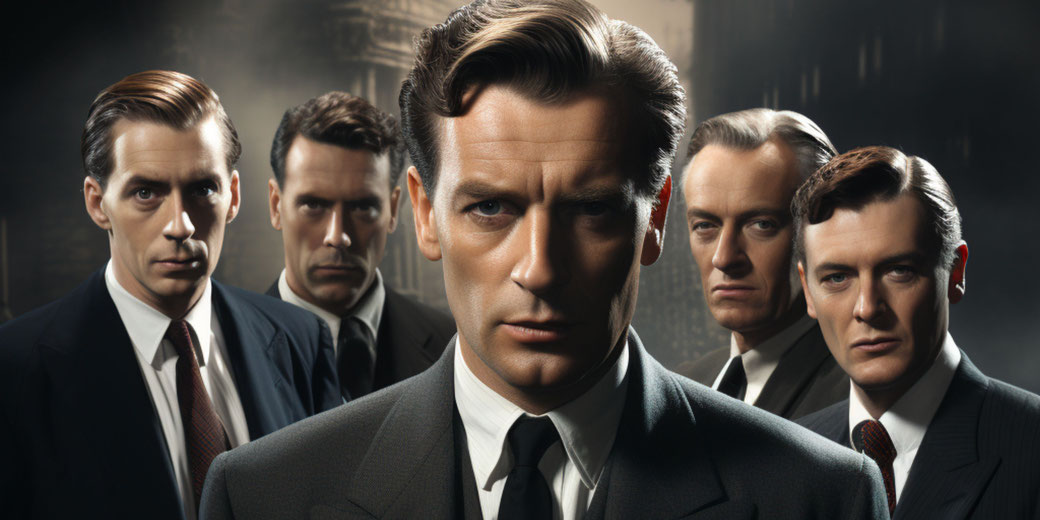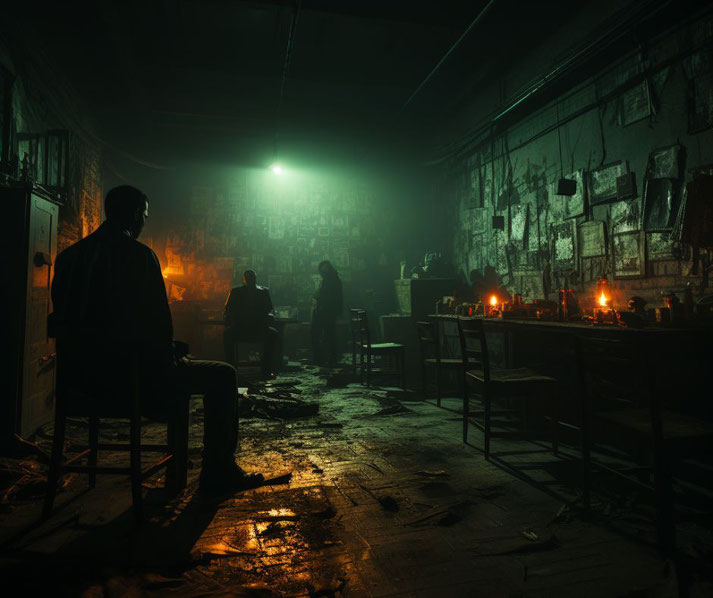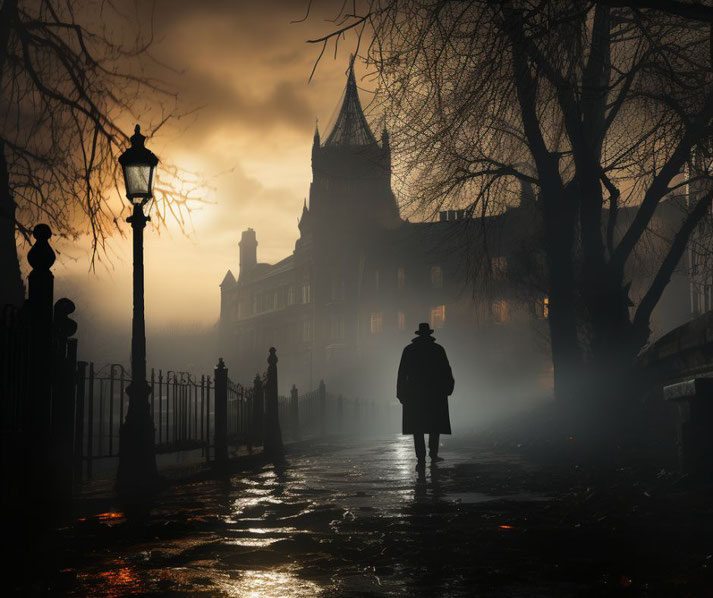The Cambridge Five: The British elites who spied for the Soviets

The intricate web of espionage during the Cold War weaves a story that often feels extracted straight from the realms of fiction. Among these tales, few capture the imagination and shock value quite like that of the Cambridge Five.
These were not faceless bureaucrats hidden deep within the machinery of government; they were the British elite, men educated at one of the world's most prestigious institutions, the University of Cambridge.
As students in the 1930s, amidst the looming shadows of fascism and the seductive pull of communism, they formed connections and beliefs that would lead them down a path of duplicity.
A world of Cold War tensions
The interwar period was a time of immense turbulence and change. The aftermath of World War I left a Europe scarred by conflict, grappling with the rise of new political ideologies and the fall of empires.
Great Britain, while victorious, was not immune to the social and economic upheavals that rocked the continent.
The roaring twenties gave way to the Great Depression, and as unemployment soared and economic hardship set in, many began to question the foundations of capitalist democracies.
These ripples of discontent found fertile ground in intellectual circles, and universities became hotbeds for political discourse and debate.
At the University of Cambridge, the intellectual elite of the nation converged, and here, the battle of ideologies was especially intense.
While the institution had long been a bastion of tradition and establishment thinking, the 1930s saw a surge of leftist student groups, notably those sympathetic to communism.
The Soviet Union, despite the ominous undercurrents of Stalin’s purges, was romanticized by some as a beacon of hope against the rise of fascism in Europe, epitomized by Hitler's Germany and Mussolini's Italy.
This juxtaposition of fascism's dark shadow and communism's promised utopia provided a potent mix that drew many young intellectuals, including those who would later form the Cambridge Five, towards the allure of Soviet ideology.

How they were recruited
As the political landscape outside the walls of the University of Cambridge grew increasingly tumultuous, within those venerable halls, young minds were being shaped and influenced.
The environment was ripe for radicalization. The allure of communism was especially strong amongst certain circles, painting a picture of a utopian society based on equality and the collective good.
This contrasted sharply with the grim realities of the Great Depression and the haunting rise of fascism.
For many, including the individuals who would become the Cambridge Five, this ideology seemed like a bulwark against the impending storm of totalitarianism.
Their radicalization, however, wasn't just an intellectual pursuit. It was deeply personal, fueled by friendships, mentorships, and a sense of shared purpose.
They were not isolated in their beliefs but instead found camaraderie in clandestine discussion groups and secret meetings.
It was in this context that the Soviet intelligence apparatus saw an opportunity. The NKVD, a precursor to the KGB, recognized the potential of these disillusioned young men, not just for their beliefs but for the positions of influence they were likely to attain in the future.
The recruitment process was clandestine and methodical. Soviet handlers, adept at psychological manipulation, tapped into the mix of idealism and ambition that drove these young men.
They were offered a chance to be part of something bigger than themselves, to actively combat the rise of fascism and promote the cause of communism.
Kim Philby, for instance, was introduced to the world of espionage by a fellow communist sympathizer, and from there, the dominoes began to fall.
One by one, through introductions and referrals, the group was formed. Each member was subtly maneuvered into the fold, convinced that their covert activities were not just acts of rebellion, but essential contributions to a noble cause.

Who were the members of the Cambridge Five?
First and foremost among them was Kim Philby. A charismatic figure with a sharp intellect, Philby rapidly climbed the ranks of the British intelligence community, eventually securing a senior role in MI6.
His position allowed him to relay a wealth of crucial information to the Soviets, making him one of the KGB's most valuable assets.
But beyond his espionage activities, Philby's double life was a testament to his exceptional skill in deception, maintaining close friendships with many in the intelligence world, including those tasked with hunting down Soviet moles.
Then there was Donald Maclean, whose dedication to the communist cause was no less fervent than Philby's.
Serving in the British Foreign Office, Maclean had access to sensitive diplomatic and nuclear secrets.
Throughout his tenure, he discreetly channeled this information to the Soviet Union, directly influencing the geopolitical dynamics of the early Cold War era.
Maclean's connection with Guy Burgess, another member of the infamous ring, deepened the layers of their espionage activities.
Burgess, with his flamboyant personality and often reckless behavior, seemed an unlikely candidate for a spy.
However, his position in the Foreign Office and later in the British Embassy in Washington enabled him to provide the Soviets with a consistent flow of vital information, further establishing the efficacy of the Cambridge network.
Equally integral to the group was Anthony Blunt, though his role was often overshadowed by the actions of his peers.
An art historian of repute, Blunt's academic pursuits belied his covert activities. As a liaison between the British MI5 and MI6, he had access to a trove of intelligence secrets.
Without drawing suspicion, Blunt managed to serve Soviet interests for years, only confessing decades later in exchange for immunity.
The narrative of the Cambridge Five is rounded out by John Cairncross. While sometimes relegated to the background in popular accounts, Cairncross's contributions were substantial.
His position at the code-breaking facility, Bletchley Park, during World War II, and later roles in various government departments, allowed him to feed the Soviets with a diverse array of intelligence.
What secrets and information did they leak?
The breadth and depth of the espionage activities undertaken by the Cambridge Five is staggering, with their operations spanning crucial years of World War II and the early stages of the Cold War.
The secrets they leaked, ranging from wartime strategies to atomic research, shaped the geopolitical landscape and significantly advantaged the Soviet Union in its tussle for global supremacy.
Kim Philby's position within the MI6 gave him an unparalleled vantage point. Stationed in Washington, D.C., at the onset of the Cold War, he was privy to the innermost workings of the Western intelligence community.
In this role, he managed to divert the suspicion away from fellow spies while ensuring a steady stream of intelligence flowed to Moscow.
Notably, Philby alerted the Soviets to Operation VALUABLE, a plan devised to instigate an anti-communist revolt in Albania.
His timely information allowed the Soviets and their allies to neutralize the effort, ensuring its catastrophic failure.
Donald Maclean's contributions were equally consequential, albeit in a different domain.
Given his roles within the Foreign Office, Maclean had access to the West's most classified information about nuclear weapons.
He discreetly funneled details about the atomic bomb, and later, the United States' nuclear strategy, to the Soviets.
This intelligence allowed the USSR to adjust its own nuclear strategies, thereby leveling the playing field in the high-stakes nuclear arms race.
Guy Burgess, despite his often erratic personal life, was a consistent source of diplomatic intelligence for the Soviets.
While serving in the British Embassy in Washington, he relayed crucial documents detailing Anglo-American discussions, thereby providing the Soviet leadership with an inside view of Western diplomatic stances and strategies.
Meanwhile, Anthony Blunt's activities were more discreet but no less impactful. His role as a liaison between British intelligence agencies gave him access to a vast array of secrets.
Over the years, he handed over hundreds of documents, from MI5 operations to the identities of British agents.
John Cairncross, stationed at Bletchley Park, had access to one of the Allies' most significant assets: the Ultra secret, which involved decrypting German Enigma codes.
He passed key pieces of this decoded intelligence to the Soviets, notably aiding them during the crucial Battle of Kursk in 1943.

How they were discovered
For all the meticulousness with which the Cambridge Five operated, the nature of espionage means that the threat of discovery perpetually looms large.
By the early 1950s, cracks began to emerge in their protective veil of secrecy, largely due to the efforts of Western counterintelligence and the testimony of defectors from the Eastern Bloc.
The intelligence community, once blissfully unaware, began to piece together a mosaic that suggested deep-seated betrayal from within their ranks.
It was the defection of Igor Gouzenko, a Soviet cipher clerk in Canada, that sowed the earliest seeds of doubt.
Though Gouzenko did not provide direct evidence implicating the Cambridge Five, his revelations about extensive Soviet spying activities in the West spurred intelligence agencies to reevaluate and scrutinize their operations.
As investigations intensified, the net around the Cambridge network tightened.
Donald Maclean, whose position had exposed him to nuclear secrets, was among the first to come under suspicion.
By 1951, MI5 was close to confirming his betrayal. Aware of the tightening noose, the Soviets, with Philby's aid, orchestrated Maclean's escape.
In a dramatic turn of events, Guy Burgess, who was neither under immediate suspicion nor intended to defect at that time, joined Maclean, ostensibly to assist him.
However, Burgess's unexpected defection alongside Maclean added to the intrigue and raised many more questions.
Philby, by virtue of his closeness to Burgess and his esteemed position within MI6, inevitably fell under suspicion.
Despite being cleared in a cursory investigation, his reputation within the intelligence community was tarnished.
By 1963, after more evidence emerged and another round of intense scrutiny, Philby made the decision to defect to the USSR, where he would spend the remainder of his life.
Anthony Blunt's exposure took a longer, more convoluted route. In 1964, American defector Michael Straight provided information that led to Blunt's identification as a spy.
In a discreet arrangement to avoid public scandal, Blunt confessed in exchange for immunity from prosecution. His public outing would come only in 1979, shocking many in the British establishment.
John Cairncross, while interrogated multiple times throughout the 1960s, only confessed to his espionage activities in 1964.
Like Blunt, his public exposure was delayed, with his role becoming widely known in the 1990s.
Their impact on the rest of the Cold War
The saga of the Cambridge Five, more than just a series of espionage escapades, had profound and far-reaching consequences. Its reverberations were felt across intelligence agencies, political corridors, and the broader fabric of society, reshaping perspectives on loyalty, trust, and the vulnerabilities of democratic systems.
From an intelligence standpoint, the betrayal of the Cambridge Five was a stark wake-up call for Western agencies, particularly Britain's MI5 and MI6.
The very idea that individuals from the nation's elite, educated at its most esteemed institutions, could turn against their homeland sent shockwaves throughout the establishment.
It underscored a pressing need to overhaul recruitment procedures, vetting processes, and internal security protocols.
For years after the revelations, intelligence agencies worldwide grappled with the so-called "mole fever," an obsessive hunt for double agents within their ranks, sometimes to their own detriment.
Politically, the defections and subsequent revelations were a public relations disaster for the UK.
They not only revealed glaring vulnerabilities within the country's intelligence apparatus but also painted a picture of an establishment riddled with cracks, susceptible to ideological subversion.
This perception, exploited by adversaries, weakened the West's moral high ground during the Cold War, serving as fodder for Soviet propaganda.
The fact that members of the British elite had willingly sided with the communists raised uncomfortable questions about the ideological allure of the USSR, even if its reality was far from utopian.
In broader societal terms, the legacy of the Cambridge Five transcends mere historical interest.
Their tale, rife with themes of betrayal, ideological conviction, and personal conflict, became emblematic of the complexities inherent in the Cold War era.
It served as a poignant reminder of the fragility of trust and the depths to which personal beliefs can steer one's actions, even against one's national interests.
Their story, retold in countless books, films, and plays, became an enduring narrative of the human dimensions of geopolitical struggles.
Moreover, the Cambridge Five narrative prompted deeper introspection about the nature of loyalty and the allure of foreign ideologies.
It raised essential questions about the vulnerabilities present in open societies and the balance between freedom and security.
In many ways, the lessons drawn from their saga continue to inform contemporary discussions on intelligence, national security, and the multifaceted nature of global conflicts.
What do you need help with?
Download ready-to-use digital learning resources
Copyright © History Skills 2014-2024.
Contact via email
With the exception of links to external sites, some historical sources and extracts from specific publications, all content on this website is copyrighted by History Skills. This content may not be copied, republished or redistributed without written permission from the website creator. Please use the Contact page to obtain relevant permission.





